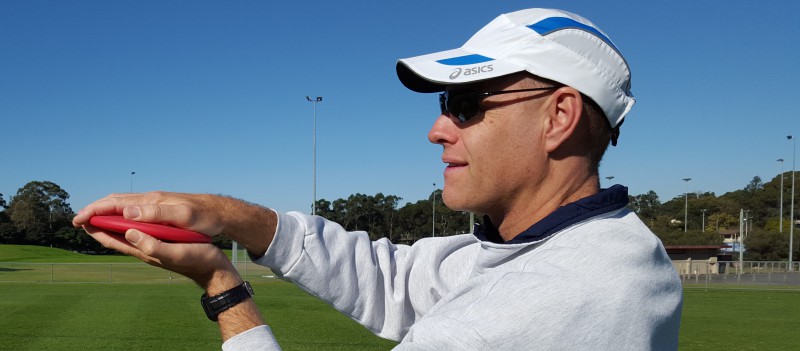Help Kids Improve Their Speed And Balance With These Essential Tips
One aspect of running that many young athletes struggle with is the arm action. Too often, they “carry” their arms instead of using them to drive their legs. This results in wasted energy, reduced speed, and increased fatigue. But with the right coaching cues and strategies, proper arm action can help increase leg drive, maintain balance, and reduce fatigue. In this article, we’ll explore the importance of the arm action in sprinting. I will also provide some coaching cues for effective arm action and strategies for practicing the skill.
The Importance of the Sprint Arm Action
An effective arm action is essential for sprinting success. Proper arm movement helps increase the leg drive, maintain balance, and reduce fatigue. When sprinters use their arms correctly, they more effectively generate momentum and speed. An incorrect arm movement can lead to wasted energy, reduced speed, and increased fatigue through unnecessary and misdirected movement.
Arm Action Coaching Cues
To help young athletes develop a proper arm action, coaches should focus on providing clear and concise coaching cues. There is no one correct arm action that will suit everyone. Runners are not robots and there is no need to create cloned techniques. However, while each athlete may have a unique arm movement, some broad rules apply to an effective sprint arm technique.
1. Pump your arms
Kids often use their arms passively and without intent. Encourage sprinters to actively pump their arms backward and forward. This helps generate momentum and speed.
2. Keep your shoulders relaxed
Sprinters should keep their shoulders down and relaxed. This helps reduce tension and allows for a more efficient arm swing. They can imagine their head and shoulders are shaped like a coat hanger, where the head is the hook. As they run, get them to focus on keeping their shoulders down and relaxed. No hunching or shrugging them up toward their ears.
3. Use an opposite arm & leg action
As a sprinter drives their knee forward, they should swing their opposite arm back. This helps create balance and momentum. The range of the arm swing can affect the range of the leg action.
4. Keep your arms bent
Traditionally sprinters have been taught to run with their arms held at approximately a 90-degree angle. These days there is a school of thought that the angle at the elbow should open and close as the arm swings backward and forward. Some coaches advocate for an angle of greater that 90 degrees at the top of the backswing and less than 90 degrees at the top of the forward swing. This, of course, depends on the intensity of the sprint. Keep it simple for kids and tell them to keep their arms bent at 90 degrees – like the corner of a square.
4. Keep your hands relaxed
A sprinter’s hands should be relaxed, with fingers lightly curled, but not clenched. This helps reduce tension and allows for a faster arm swing. Tell kids to imagine they are holding a potato chip (crisp) or an egg in each hand. You don’t want to crush them but you also don’t want to drop them. Keep the hands relaxed and gentle.
5. Drive your arms down and back
Encourage sprinters to focus on driving their arms down and back vigorously, rather than just swinging their arms. This helps generate more power and speed in the arm swing. A downward/backward arm swing is better than a forward/upward arm swing. The former will help to drive the athlete forward. The latter will result in upward/backward forces.
6. Avoid crossing the midline of the body
Sprinters should avoid crossing their arms over their body’s midline. Crossing the midline can twist the body. The torso will turn one way and the lower half of the body will react by turning in the opposite direction. This will direct power laterally instead of straight ahead. This reduces efficiency with the sprinter’s energy spread across a wide area instead of straight ahead. The sprinter’s balance is also affected. The body is continuously put in awkward positions and challenged to recover. Unnecessary energy is expended, resulting in quicker fatigue. The arms should move virtually straight forward and backward. To encourage a stable torso, tell the kids that the belly button should be able to see where the athlete is going and not get dizzy!
7. Keep your arms in and elbows down
A sprinter’s arms should be kept close to the body and move in a sagittal plane forward and backward. No chicken wings! Lifting the elbows will move the arm action into more of a horizontal plane. It will be more likely that the hands will cross the midline of the body and the torso will twist from side to side wasting energy and spreading the speed in all directions. No wobbling and no funky dancing!
8. Maintain a consistent arm swing
Sprinters should maintain a coordinated and consistent arm swing throughout the race. No sudden or jerky movements. This helps conserve energy and maintain speed.
Strategies for Practicing Arm Action
One way to help young athletes practice this movement is by starting with isolated arm movements, without focusing on the legs. Keep an eye out for “chopping” or “sawing” arm actions when working with kids
Standing, kneeling, or sitting positions can be used to rehearse the arm action. A tall sitting position on the ground with legs extended straight out in front is effective in teaching young athletes to keep their arms bent. Too much straightening of the arms will result in their hands contacting the ground.
Working in front of a mirror can be a useful source of feedback for a young athlete.
Once the athlete has learned a basic effective arm movement, it can be incorporated into higher-speed running activities and eventually the full running action.
Conclusion
Improving arm action is essential for young athletes looking to enhance their sprinting performance. By focusing on the key coaching cues and strategies outlined above, kids can develop a more efficient and powerful arm action. The result will be better balance and speed, and less fatigue. Coaches should encourage their athletes to practice proper arm action by starting with isolated arm movements and gradually incorporating them into higher-speed running. An effective arm action can help take a young athlete’s sprinting to the next level.
Further Reading
A Fun Sprints Lesson Plan For Kids E-Book (plus bonus cheat sheet) by Coaching Young Athletes
If this post helped you please take a moment to help others by sharing it on social media. If you want to learn more I encourage you to leave questions and comments or contact me directly.
Darren Wensor is a sports development professional, coach educator, specialist coach of young athletes, and founder of the blog coachingyoungathletes.com. Learn more about him here and connect with him on Twitter, Facebook, Linkedin, or via email. Check out Coaching Young Athletes on YouTube, the Coaching Young Athletes podcast, and the Coaching Young Athletes E-Book Series.

